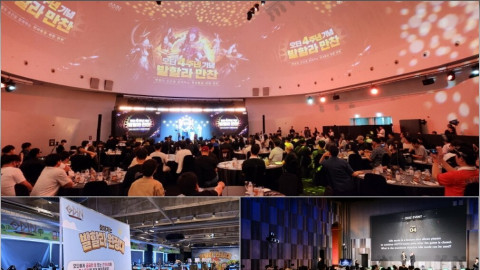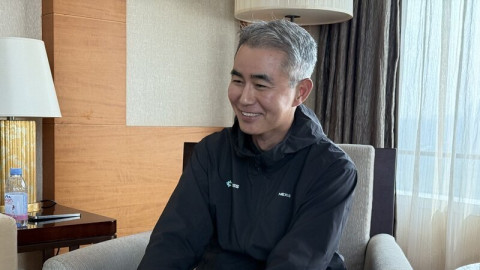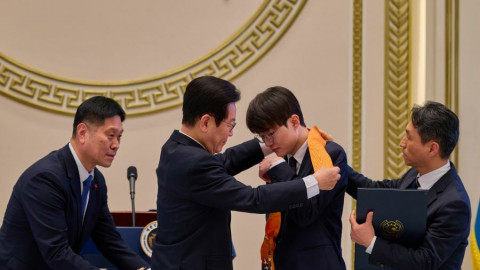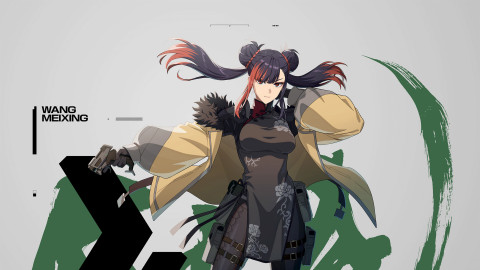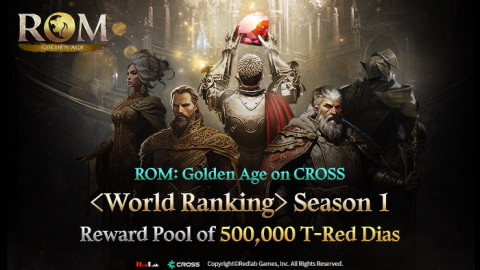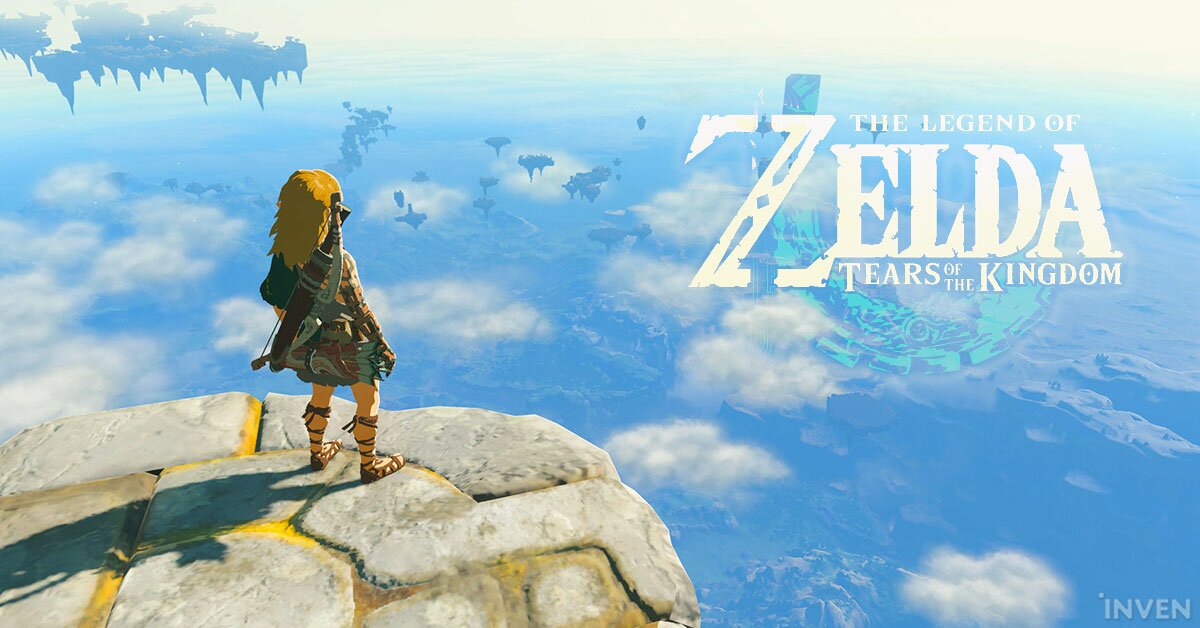
Legend of Zelda: Breath of the Wild is a title that affected Nintendo and the gaming industry since its original Legend of Zelda series.
The game background and story progressed through many different series, and it was back with a new world with a changed future. It was a launching title for the Switch, a hybrid combination of the standard console and the handheld console, which opened a new generation for Nintendo. With its launch, its impact on the gaming industry opened up more possibilities for open-world games with its adventurous attempts.
Breath of the Wild much affected the gaming industry and was recognized for its positive effect. Since Breath of the Wild was so sensational, many fans worried if they could make something better. Legend of Zelda: Tears of the Kingdom showed more than they could imagine, and expanded the freedom and adventure of what could be expressed in a game.
Game: Legend of Zelda: Tears of the Kingdom
Genre: RPG / Action Adventure
Release Date: May 12, 2023
Review version: 1.1.0
Developer: Nintendo
Service: Nintendo
Platform: Nintendo Switch
Play: Nintendo Switch
◎ Warning: There can be spoilers in this article.
Surviving in the wild? Evolved journey
The game begins following the true ending of its predecessor, where Link and Zelda explore the ancient ruins. The story intensifies as they meet mummy Ganondorf and the master sword gets destroyed. Zelda disappears as the floor collapses from beneath, and Link wakes up without anything on the Island in the Sky.
That way, Link starts again without anything. The player loses everything, including the abilities from the previous game, from a spot on the Island in the Sky. It’s the beginning of another long journey for Link with just three hearts and a stamina gauge.

However, this journey changed massively with the extended narrative.
In Breath of the Wild, the game doesn’t force the player to do anything except for the basic tutorial. King Rhoam, disguised as an old man, designates simple tasks for the at this point, but there weren’t any detailed guides. The priority was for the player to get used to using the skills and techniques of the new game by themselves, which was different from its predecessors. They threw the players out in the wild and had them survive on their own.
This kind of narrative was an element that could fade the direction and characteristics of Breath of the Wild. The creative things players can do in the game with many different elements and changing wild can’t be done by any explanation — they had to enlighten themselves as they play. This style was made with a different type of freedom compared to the previous Legend of Zelda series.
Survival games or sandbox games, like Minecraft, have players set up and experience many things as they adapt to the world. In these types of games, if there’s a narrative for some imperativeness or a goal is emphasized, players would play accordingly instead of playing creatively. So in this game, the ‘higher existence’ just explains the rules of the world and simple ways to play before disappearing.
Breath of the Wild is a role-playing game which the players’ role is important, but on the other hand, players were free to do whatever they wanted, and most of the creative things to attempt worked out quite well. That’s probably why it was formed of four major points to cover, save Zelda, and exterminate Calamity Ganon. The side stories as the player played were some extra material for the players to get immersed in the game more. The story of 100 years ago, which needed more description, was published separately through Hyrule Warriors: Age of Calamity.

▲ The narratives that weren’t covered in Breath of the Wild was covered in Hyrule Warriors: Age of Calamity.
The structure of the narratives and delivery in Tears of the Kingdom is similar. Like Breath of the Wild, players have to liberate four temples with four characters and find Zelda based on the powers gained. Ganon appears again as an enemy — so it’s more the same than similar. The story progresses through cut scenes instead of the adventure.
Although the delivery is almost the same, the content is different. Unlike Breath of the Wild, which focused more on the play with several side stories, the story of Tears of the Kingdom is direct and clear. From the beginning of the game, it explains several elements that were just vaguely hinted in its predecessor.
Ganon appears in a human form again, boasting its power, and the Zonai, which existence was not clear, appears immediately in front of Link to lead the game from the beginning. While there are people that remember the original who played Breath of the Wild, which explains the story of 100 years ago, Tears of the Kingdom goes back 10,000 years, and the description is much more precise.

And these stories are connected to the game play. The process of searching for missing Zelda and abnormal reports of happenings, everything connected to the old days. The story has a much more direct effect in each case.
Especially, the story of the old days and Zelda’s whereabouts is quite serious and almost shocking compared to the light story of its predecessor. Like the Zonai and Ganon’s revival, there aren’t many twists to Zelda’s story, and it is delivered clearly through consistent implications.
This time as well, players go back 10,000 years by reaching the tears to look into the memory. It’s quite a convenient way, as Link looks into a memory from a third-person point of view. If the content focuses on the relations of several characters, this time, it focuses on the incidents from the past and how it is connected to the story right now.
Since there is no single direction of gameplay, when the players gain geoglyphs are all different, and the order of the cut scenes are all different as well. That makes each player see the scenes in different order, and the atmosphere and emotion can differ drastically depending on the order of what the players see.


Saving Zelda? But I have to do this first!
Tears of the Kingdom covers uncovered stories and unsolved mysteries, along with clearing some elements that were just hinted in the previous games. Even so, the fundamentals are about free play.
Like Breath of the Wild, to emphasize the characteristics of the game, the narrative has to be relatively simple. However, as mentioned above, Tears of the Kingdom focused on the story of the game. There’s a reason for this and an advantage they aimed for. Also, the developer’s confidence was clear about how the game’s characteristics wouldn’t go away, even if the focus was on the story.

First, Tears of the Kingdom doesn’t need to appeal the game’s strengths to those who have already played the previous versions. Breath of the Wild was about how it was different from the previous series, and about how fun it is to play something different, so the narratives were weakened to focus on that aspect.
However, Breath of the Wild was a game that was widely popular, if not the most popular, among the entire Legend of Zelda series, so many different people played it. Most of the players already know the cons and the characteristics of gameplay. That’s why it didn’t need any more introduction to how free the gameplay is.
That style continues in Tears of the Kingdom. The freedom of the gameplay doesn’t deduct any strengths of the narrative, and the narrative is now another point for the players to get immersed into the game and another strong point of the game as well.

Contrarily, there are many games that start the game anew despite their previous game’s success and reputation. Even among all the praises and positive evaluations, Breath of the Wild lacked a clear goal and direction, so it made it difficult for some players to get into the game entirely.
The given narrative this time is quite clear, and it provides a clear reason for players to play the game. By Zelda going missing from the beginning, obviously, the goal of ‘finding Zelda’ naturally comes into mind without additional description.
The Island in the Sky is where Link wakes up and a tutorial area — it's vastly wide to call it simply a tutorial area — and it’s the same as Breath of the Wild as Rauru asks to visit a temple and solve the situation there. However, in Breath of the Wild, it isn’t explained properly why players have to follow the instructions even up to where they gain paragliding.
This time, a big goal was set naturally. Afterward as well, by just following the goals, the core story can be experienced in the big picture. This made it easier for players that aren’t used to sandbox games to approach Tears of the Kingdom.

A stronger narrative, including untold stories from its predecessor, may not be enough to deliver the freedom in the game to those who didn’t play Breath of the Wild. It’s been long enough since its release, so there would be many who forgot the detailed play senses of the game.
However, the roots of the freedom in Tears of Kingdom are too deep for the game to be shaken up. Even with the stronger narrative, there is confidence from the developers or at least more hard work from them that the game can induce creative gameplay.
The details of the gameplay introduced a month before the launch showed Links abilities that were different from the previous games, and that brought up a lot of hype. And fulfilling the high expectations, the abilities in the game were just perfect to make many different creative styles of play.
For example, Ultrahand isn’t just to create certain objectives. Players can use it on almost all objectives, and many different combinations can be made without much restrictions. Zonai Gear objects with special powers, such as propulsion or self-powered wheels, gliders, light sources, lasers, or fire cannons, can be obtained in virtually unlimited quantities by looting enemies.
In addition to the cars and wagons already seen in the videos, players can create tons of their own objects. From bombers to sleek high-speed cars, there are tons of creations shared with the community. The only thing stopping players from letting their imaginations run wild is usually a lack of imagination.
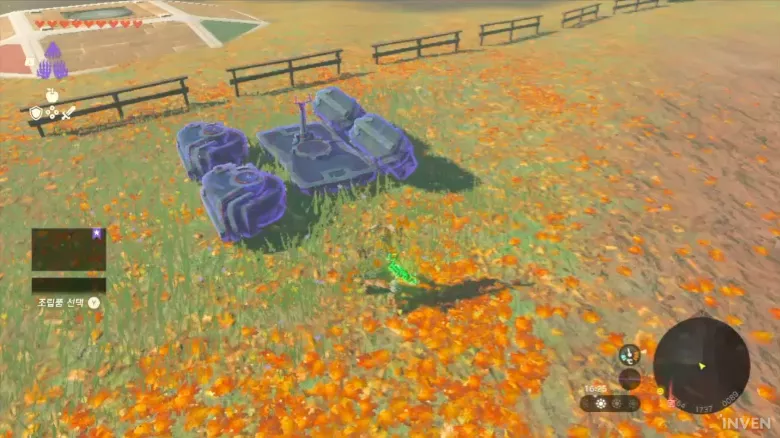

Fusing, the use of materials as weapons, is also a new, but sometimes frustrating, twist on Breath of the Wild's weapon system. Combining weapons and objects to create new abilities is another new feature, and most of the materials in the game can be tied to a weapon and used in a variety of ways.
You can attach springs to your shields that act as jumping platforms to bounce attacking enemies off of them and drop them from great heights, and you can attach different materials to your weapons to create new weapons that utilize them. Some materials simply increase damage, while others can be combined with each other.
Time-reversing recalls and ceiling-breaking ascends embody the vertical movement of rock climbing in a broader form, creating a sense of freedom of movement.
The game helps you to adapt and utilize these new abilities in many areas of combat, play, and movement. With the emphasis on exploration and freedom in the previous game, there are countless ways to play this one. The narrative reinforcement only plays to the game's strengths, as there are plenty of sections where you can play along with the narrative and still be introduced to new game elements.
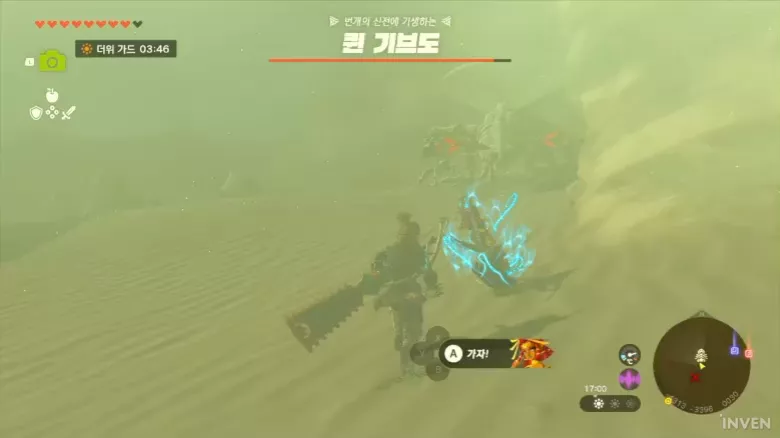
New, but Zelda-like
The strengthened narrative is one thing, but the diverse abilities are the biggest strength of Tears of the Kingdom. This newfound in-game freedom fosters creative play that breaks through traditional boundaries. This freedom to play creatively can, if handled incorrectly, scatter the core of the game.
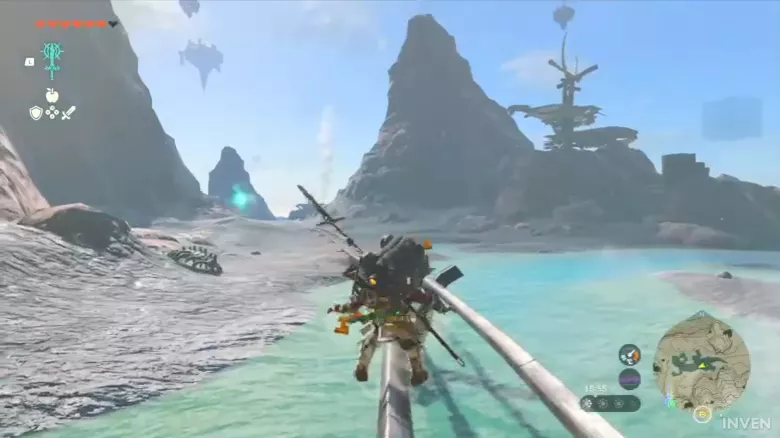
Tears of the Kingdom can be categorized as both an RPG and an action-adventure, aside from the fairly convenient stylistic advantage of an open world. So if the player, who exists solely as Link, loses that role due to intoxication with freedom, the game becomes nothing more than a sandbox action of combining objects and creating weapons.
However, the actual game emphasizes the various elements of Link's abilities in the game. The main one is the element of "attaching" items via the Ultrahand. In many sandbox games, the player becomes absolute, at least in the part of the game where they directly change the state of the world. Tears of the Kingdom also has the freedom to combine objects, but they look like they're glued together.
The glue is not a world that the player creates, which is simply an entity outside of the game, but rather a way for the player to become the Link that utilizes magical-like abilities in the already existing land of Hyrule. It identifies the player as Link but does not make the player the protagonist of the game. It's a subtle distinction, but it's one that allows the aforementioned narrative benefits and freedom to come to life, and it was proven that it's possible in the games.

This intuitiveness, like the glue, is one of the core strengths of the game, carrying over from its predecessors. There's a lot of interactivity in Breath of the Wild, like setting fire to grass to create an updraft, or picking up an iron weapon in a lightning storm to be struck by lightning.
These are things we've been told, experienced, or otherwise acquired in life, and things we've recognized through scientific mechanisms in nature, despite the game's allowances. It's not a separate world built on top of a separate body of knowledge just for the game, but a realm of intuitive judgment and reasoning where things happen because they're supposed to.
The glue is the easiest, most obvious way to let the player know if something is attached or detached. Nintendo has stated in interviews that they intentionally implemented glue for this purpose. This concept of "gluing" gives the player an intuitive understanding of how it works without having to know much about it.
Instead of saying, "A smooth metal ball should only be glued to a rough wooden surface with friction," the game explains, "There's glue, and you can glue what you see," in an intuitive way. It also serves as a natural adaptation to the game, as you start by simply gluing things together and gradually expand your creative horizons.
This intuitiveness is the key to being ‘Zelda-like’ that producer Eiji Aonuma suggests.

There are so many abilities at the player's disposal and so many creative ways to play with them that they have an impact on the entire gameplay. However, if these plays were infinite, the puzzle fun, the other core of the game, would be lost in the shuffle.
In the end, you want to have multiple solutions to a single puzzle, or a temple raid, that players can use their abilities and imagination to solve, but you don't want to force them to solve puzzles based on the convenience of abilities without thinking.
That's where Tear of the Kingdom’s level design really shines. You'll have to rack your brains and come up with ideas to get through areas like shrines and temples that have set paths. It's a lot of work, and when you finally get to the end, you're overcome with a sense of accomplishment that you're the only one who could have solved this difficult puzzle. Well, most of the time, other people did it in a similar amount of time.
Anyway, by approaching the clear section of the puzzle, visions begin to widen, and players slowly notice other things. Once they start to notice things like scattered rocks, grooves they hadn't seen, and materials that can be combined with weapons, they start to simulate possibilities other than the way they played. Some of them require mechanics, while others require creativity that they wouldn't have even imagined.


▲ Each temple has a different gimmick along with the abilities
The important thing is that the abilities themselves are structured so freely that the player doesn't realize that the puzzle is restricting them. The organization of the puzzle obviously creates and restricts some elements or sections where existing abilities cannot be used.
But rather than complaining about why they can't utilize their abilities, it challenges them and makes them think, "I could try this, I could try that. This is because the level of restriction is usually within the context of a logical puzzle where the use of the ability would be a distraction.
It's a level design that encourages and focuses the player's attention on solving puzzles by experimenting and utilizing abilities that are more powerful than Breath of the Wild’s.
This meticulous setup is only possible when the developers simulate a large number of situations that players are likely to encounter. I can't imagine how many changes and considerations the change in abilities must have brought to the level design.
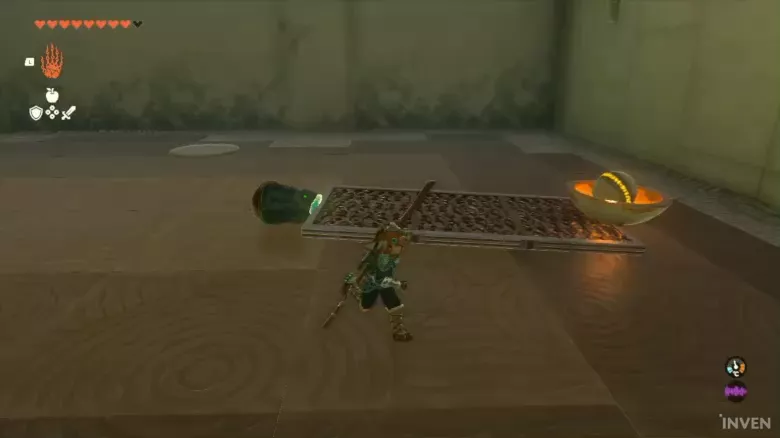
Representing the combination of ability utilization and game design are the building sites found throughout the game. Building sites are where Hudson Construction stacks materials such as lumber and wheels to rebuild the land of Hyrule. In actual gameplay, these materials make great Ultrahand materials — sometimes bridges for roads, and sometimes lumber for wagons or ships. At its simplest, a building site is a small supply of materials to utilize for game content.
However, given the nature of the game, where players will be running around on their feet across a large map, the distribution of materials for your mount's base to help players get around is definitely a game-changer. These aren't just boxes or items on the ground, but building sites that tie into the game's world and story of rebuilding after a catastrophe.
It's a complex mix of settings and conveniences on top of simple gameplay. In reality, there are a lot of complicated things in games. And by combining it with something intuitively understandable, like a building site, it doesn't feel out of place in the game.

This is the direction of Tears of the Kingdom’s intuition. "Can I do this?" and when you put it into practice, you can actually do it, and you can feel "this is why" without any explanation. This is easier said than done, but it's definitely a challenge in a game where you have to react to every situation.
As a developer, it would be easier to encourage structured play because there's less to think about. In Tears of the Kingdom, on the contrary, it gives you more freedom than its predecessor. And that means working with variations of the same world.
While mid- to late-game play is centered around traveling back and forth between the sky island and the underground, the sky island is clearly less wide than a land. Conversely, the underground, which is the same size as a land, has a unique personality, but it's not as central to the gameplay as the land and sky island. In the end, for the first half of the game, except for the tutorial, the same Hyrule land as its predecessor is the core background.

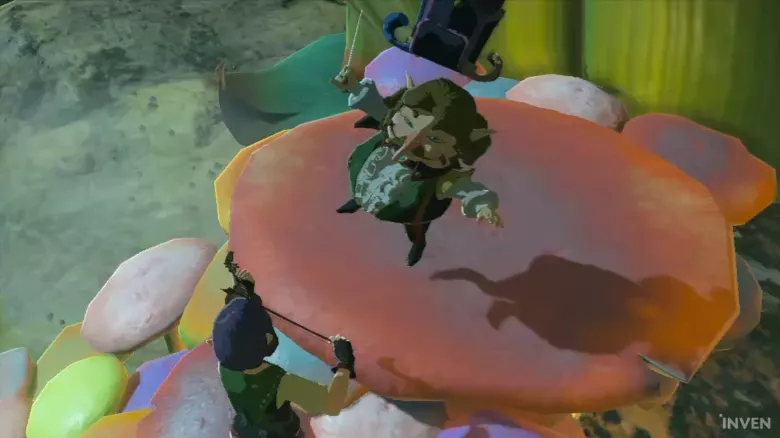
This is why some have criticized the game for recycling the same space as its predecessor. However, it's hard to argue with this criticism given that many of the abilities are heavily involved in the game.
As mentioned above, if there was unlimited access to abilities that had such a big impact on the game, it might have been a mindless cheat. However, any height or slope that didn't break through the ceiling or require cerebral play had to be applied to all of the existing Hyrule lands. This means making Tear of the Kingdom’s Hyrule feel like the same space as Breath of the Wild’s, while actually making it a different space with different roles. The fact that they were able to accomplish this with more freedom than in Breath of the Wild is breathtaking in itself.
In addition, the core color scheme, which was blue to represent the Sheikah, has been readjusted to green. And it's used evenly throughout the game, which is something players can easily miss in a game like this, but it's nice to see the attention to unity and overall color scheme.

However, in keeping with this goal and direction, they also discouraged the use of glitches (unintentional game errors) to utilize abilities and rely on physical elements and tricks. Gone are remote-control bombs that can easily damage many enemies, time locks that freeze movement, and the overall difficulty of the game has increased dramatically.
Trapped in Switch and beyond Switch
Since its launch, the Nintendo Switch has been a highly versatile hybrid device between a console and a portable console, but it's always been inferior to its console counterparts, and it's still coexisting with the next generation of consoles like the PS5 and XSX.
These limitations don't make Wangnun any less frustrating. The game's resolution and stuttering frames certainly don't match the beauty of other AAA titles. But on the flip side, it's also worth pointing out that the game looks as good as it does within its obvious limitations.

There are still very few games that match the graphics of the Switch’s launching title, Breath of the Wild, and Breath of the Wild utilizes the power of the device to create an open-world world that is seamless, with no loading screens except when entering a shrine or warping through space.
Unlike its predecessor, which was released on Wii U and had to make some compromises, this one was made exclusively for Nintendo Switch, and it shows in the mature look of the game. With proper field-of-view utilization and quality control, players wouldn’t notice any noticeable in-game frame drops. There also weren’t any optimization issues like stuttering, which has been a problem in recent AAA PC games.
The framerate plummets during heavy action, though, such as using Ultrahand in a space with lots of objects and environmental elements. This is where the clock itself shows its lack of performance. On the flip side, the view from diving high up on a sky island is a refreshing surprise. Even with the lack of performance, it's still a memorable experience to be able to travel directly to the ground seamlessly.

The UI and usability changes are also quite noticeable. The biggest change is the consolidation of abilities into one button, L, and the separation of the button above the arrow keys for materialization. Players can now pull the bowstring, press the up button to select an item, and combine materials directly on the bow.
It's not exactly convenient. While it's not as bad as Breath of the Wild, where materials had no value outside of enhancements and cooking ingredients, there are a lot of materials that have obvious uses. Add to that the number of things that are so common that special abilities are crammed into material combinations, leaving players with a plain wooden arrow. While it's possible to organize the materials in an order that is used most often, it's a shame that players have to flip through them one by one in combat and repeat them every time they want to shoot an arrow.
On the plus side, the arrows that used to be divided by attribute have been consolidated into a single wooden arrow, making arrows more plentiful. Still, there are definite improvements in terms of convenience, such as making it easier to see the recipes you can make with materials, making it easier to retrieve materials directly from the field, and making it possible to categorize item types on one screen.

As materials become more versatile, the combat balance adjusted for them becomes quite unwieldy. While the basic direction of combat is the same, enemies are also using more powerful weapons that can be enhanced by fusing, and no matter how much armor players put on, they can't keep up with the rate at which the weapons' damage ramps up at normal speeds.
Players have to hit before they run out of armor, and it's hard to use fusing to combine weapons on the fly, so the emphasis is on carrying a powerful combination of weapons rather than variety.
Of course, once players get the hang of the game, they can parry their way through them, or even build a tank with Ultrahand to take them down.
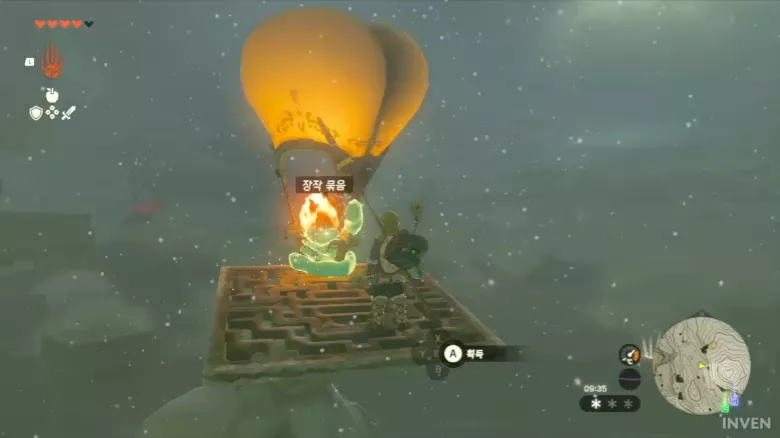
Players can also reduce the difficulty of combat with summoning. When accompanied by characters like Sidon, Yunobo, Makeela Riju, or Tulin, the ability is prepared by an interaction, and then it’s used by pressing the button again.
As the interaction is the key to using the ability, they have to remain as a figure, and after clearing the temple, they accompany the players as a summoned spirit. They may not participate in combat as much as Link who the player controls directly, but they surely deal damage to the enemies and distract them. When players clear temples, there are more of them, so they can clear enemies on their own later on.
Before they come into Link’s party as summons, their actual form accompanies the players. Standing in front of enemies along with Sidon, which was revealed in a pre-launch video, is also drawn in the game. It can be said that they have become comrades from just simple acquaintances. It’s also a touch-the-heart point for those who played Breath of the Wild.


With such high expectations, there was a bit of fear that the game would fall short of those expectations. I wondered if there would ever be a better Legend of Zelda than Breath of the Wild.
But once again, the developers have delivered a game that will have a lasting impact on the company, and have succeeded in making Breath of the Wild a prelude to a huge sequel that seemed like it would never happen.
The same world as before, similar gameplay, the freedom they've created while strengthening the narrative, and the limitless design within the confines of the game. I'm literally blessed to have been born at a time when I was able to enjoy the game at launch.
My only regret in writing this review is that I didn't get to savor and enjoy the game a little more slowly because I had to write a review.
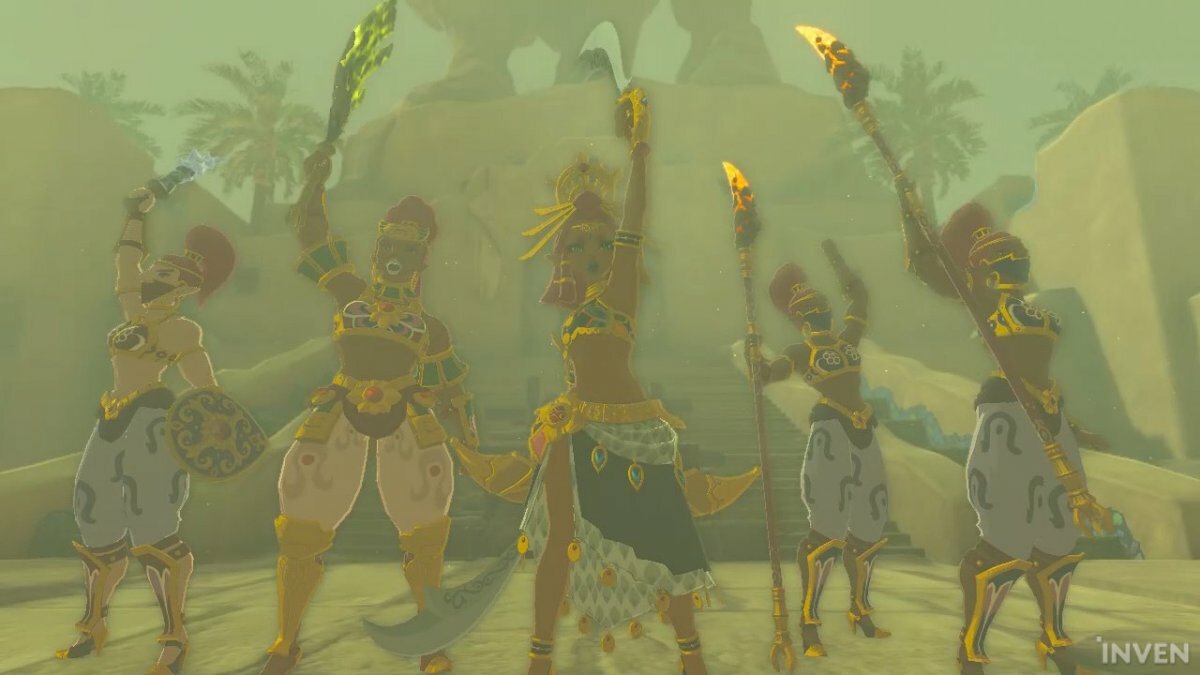
Sort by:
Comments :0




